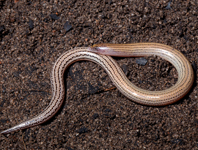Abstract
Macrocheles bolivari Iavorschi, 1987, in a volume of invited papers on hypogean invertebrate fauna collected primarily in Venezuela in 1982 during the first Romanian/Venezuelan Biospeleogical Expedition. The volume, “Hypogean and hemiedaphic fauna from Venezuela and other countries of South America. 1” was recently brought to my attention by Bruce Halliday, who recognised the similarity between Iavorschi’s M. bolivari and Allogynaspis flechtmanni Krantz, 2018, recently described from Brazil. Although some important opisthosomatic and gnathosomatic details were omitted from Iavorschi’s description, the nature of the epigynal and dorsal shields (Iavorschi 1987, Figs 1A, B), along with the unusual fixed cheliceral digit dentition (Iavorschi 1987, Fig. 1C), leave little doubt that Macrocheles bolivari is a species of Allogynaspis. However, there are discrepancies between the descriptions of M. bolivari and A. flechtmanni, such that final verification of species synonymy may only be possible if type specimens of these two entities can be compared. Of special significance here are differences in sternal shield morphology and ornamentation (Krantz 2018, Fig. 2; Iavorschi 1987, Fig. 1A), and omission of any mention in Iavorschi’s description of greatly enlarged setae on tarsus IV as described for A. flechtmanni (Krantz 2018, Fig. 6).
References
Iavorschi, V. (1987) Deux nouvelles espèces du genre Macrocheles présentes dans la faune du Venezuela (Acarina, Anactinotrichida, Gamasida). In: V. Decu, T. Orghidan et al., eds, Hypogean and Hemiedaphic Fauna from Venezuela and other Countries of South America. Editura Academiei Republicii Socialiste Romȃnia, Bucharest, 1 (13), pp. 147–150.
Krantz, G.W. (2018) Allogynaspis flechtmanni, a new genus and species of the subfamily Macrochelinae (Acari: Mesostigmata: Macrochelidae) from southeastern Brazil, with comments on cheliceral dentition, reproductive strategies, and postepigynal platelets. Zootaxa, 4455 (1), 150–160.
http://dx.doi.org/10.11646/zootaxa.4455.1.6

